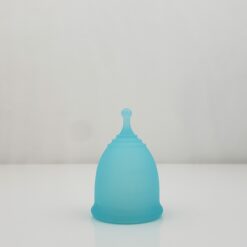Menstrual Cups
Consider the Cup: A Guide to Menstrual Cups
Menstrual cups have become a popular alternative to traditional period products like pads and tampons. They offer numerous benefits, including environmental friendliness, cost-effectiveness, and health advantages. Here’s everything you need to know about why you should consider making the switch to a menstrual cup.
Benefits of Menstrual Cups
- Environmentally Friendly: Unlike disposable pads and tampons, menstrual cups are reusable. This means they significantly reduce the amount of waste generated during your period. A single cup can last for several years, making it a sustainable choice.
- Cost-Effective: While the initial cost of a menstrual cup might be higher than a box of tampons or pads, it quickly pays for itself. Since one cup can last up to ten years with proper care, you'll save money in the long run.
- Health Benefits: Menstrual cups are made from medical-grade silicone, rubber, or elastomer, which are safe materials that don’t contain harmful chemicals. They also reduce the risk of toxic shock syndrome (TSS), a rare but serious condition associated with tampon use.
- Convenience: Menstrual cups can hold more fluid than tampons or pads, allowing you to go longer between changes. This is especially beneficial for those with heavy flows or busy schedules. Most cups can be worn for up to 12 hours, depending on your flow.
Choosing the Right Size
Menstrual cups come in different sizes to accommodate various needs and body types. Here’s a quick guide to help you choose the right size:
- Extra Small (XS): Ideal for teens aged 18 or younger or women with a petite physique. This size is suitable for a light to normal flow (1-2 tampons per day).
- Small (S): Best for women under 25 years of age or those who haven’t given birth. It works well for a light to normal flow (2-3 tampons per day).
- Large (L): Recommended for women 25 years and older or those who have given birth. This size is designed for a normal to heavy flow (3-4 tampons per day).
Lifespan of a Menstrual Cup
With proper care, a menstrual cup can last anywhere from 5 to 10 years. It’s important to follow the manufacturer's instructions for cleaning and storage to ensure the longevity of your cup. Regularly inspect your cup for any signs of wear and replace it if you notice any damage.
How to Insert and Remove a Menstrual Cup
Inserting a Menstrual Cup
- Wash Your Hands: Always start by washing your hands thoroughly to maintain hygiene.
- Fold the Cup: There are various folding techniques, such as the C-fold or punch-down fold. Choose the one that feels most comfortable for you.
- Relax and Insert: Find a comfortable position, such as sitting on the toilet or squatting. Gently insert the folded cup into your body, aiming it towards your tailbone.
- Ensure Proper Placement: Once inside, the cup will pop open. Run a finger around the base of the cup to ensure it has fully opened and created a seal. You can also gently tug on the stem to check the suction.
Removing a Menstrual Cup
- Wash Your Hands: As with insertion, start by washing your hands.
- Locate the Cup: Gently pull on the stem until you can reach the base of the cup.
- Break the Seal: Pinch the base of the cup to release the suction seal.
- Remove the Cup: Carefully pull the cup out, keeping it upright to avoid spillage.
- Empty and Clean: Empty the contents into the toilet, rinse the cup with water, and reinsert or store it as needed.
Menstrual cups offer a host of benefits, from being eco-friendly and cost-effective to providing convenience and health advantages. By choosing the right size and learning how to properly insert and remove the cup, you can make your period a more comfortable and hassle-free experience. Consider switching to a menstrual cup for a sustainable and effective menstrual care solution.





















